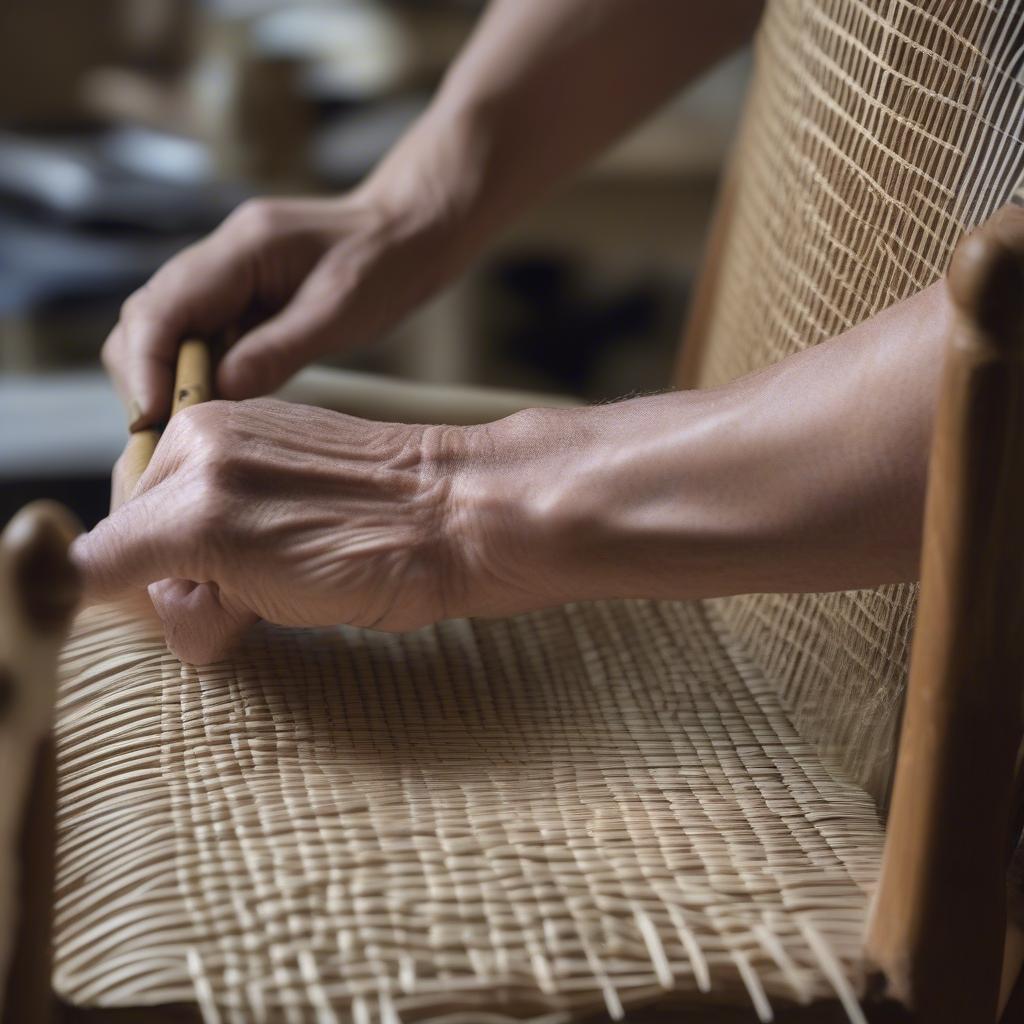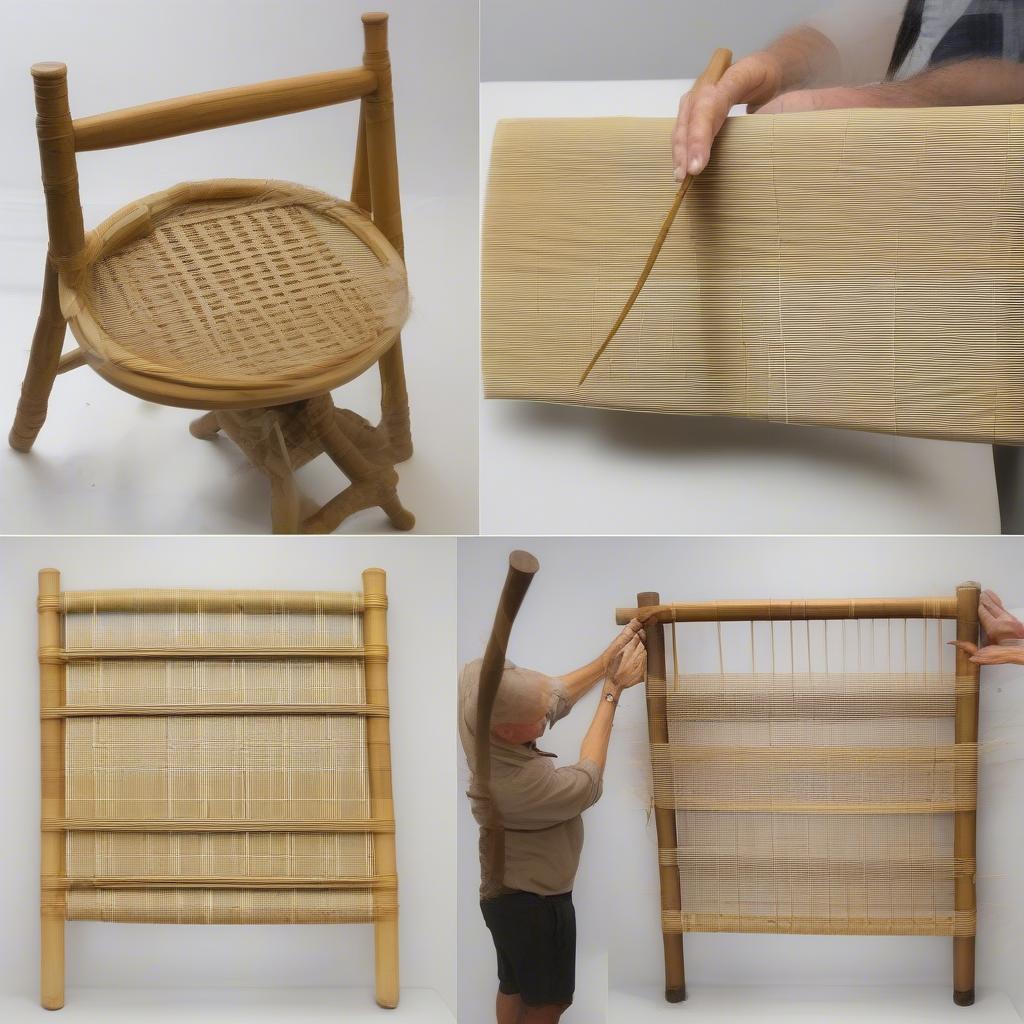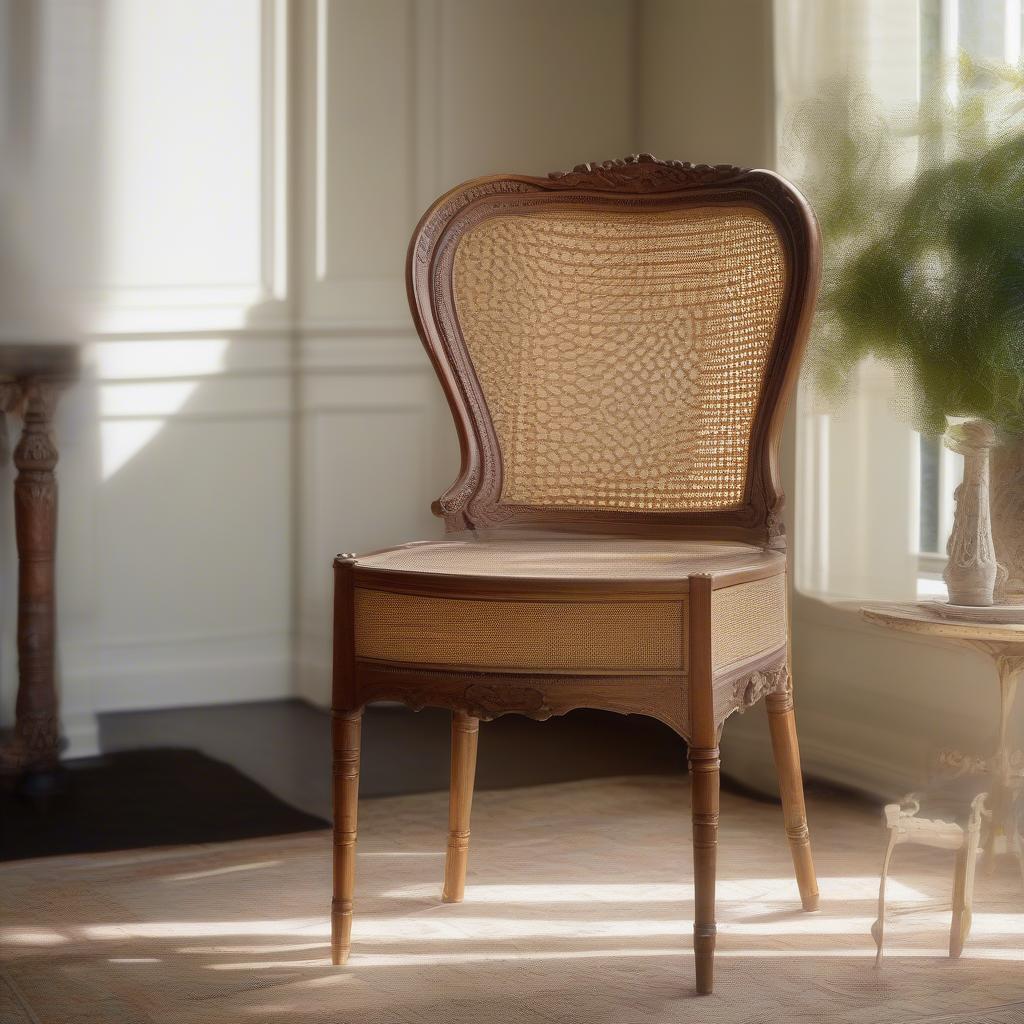Weave Chair
How to Weave Cane a Chair Back
Learning How To Weave Cane A Chair Back can transform a tired piece of furniture into a cherished heirloom. This intricate craft, while demanding patience and precision, is incredibly rewarding, offering a tangible connection to traditional craftsmanship. Whether you’re restoring a family antique or simply adding a touch of handcrafted elegance to your home, this guide will provide you with the essential steps and knowledge to successfully weave a cane chair back.
 Close-up of the cane weaving process on a chair back, showing the intricate pattern and the tools being used.
Close-up of the cane weaving process on a chair back, showing the intricate pattern and the tools being used.
Understanding Cane and its Preparation
Cane, derived from the rattan palm, is a naturally strong and flexible material, ideal for chair backs and seats. Before embarking on the weaving process, understanding the different types of cane and how to prepare them is crucial. Pre-woven cane mesh is readily available for simpler projects, while hand-weaving with individual cane strands allows for more intricate designs. Soaking the cane in warm water for about 30 minutes before weaving makes it pliable and easier to work with, preventing breakage. how to weave a cane bottom chair provides additional information on working with cane.
Choosing the Right Cane for Your Project
Selecting the appropriate cane width and type is paramount for achieving the desired aesthetic and structural integrity. Wider cane is generally used for larger chair backs or for a bolder look, while finer cane is suited to delicate and intricate designs. For beginners, medium-width cane offers a good balance of ease of use and visual appeal.
What is the best type of cane for a chair back? Generally, flat cane and pressed cane are popular choices for chair backs due to their durability and ease of weaving.
Essential Tools and Materials
Having the right tools is key to a smooth and successful caning experience. Gather these essential items before you begin:
- Cane
- Awl
- Pegs
- Scissors
- Measuring tape
- Hammer
- Warm water basin
Step-by-Step Guide to Weaving a Cane Chair Back
 Step-by-step illustration of the cane weaving process on a chair back.
Step-by-step illustration of the cane weaving process on a chair back.
- Prepare the Chair Frame: Ensure the chair frame is clean and free of any old cane or debris.
- Soak the Cane: Immerse the cane in warm water for at least 30 minutes to make it pliable.
- Weaving the Vertical Strands: Starting at the top of the chair back frame, weave the cane vertically, securing the ends with pegs. Maintain even tension throughout.
- Weaving the Horizontal Strands: Once the vertical strands are in place, begin weaving horizontally, over and under the vertical cane. how to weave cane back chair offers a visual guide to this process.
- Creating the Pattern: Continue weaving horizontally, following your chosen pattern. Common patterns include the basic over-under weave, the double-bind, and more complex variations.
- Securing the Ends: Tuck the ends of the cane securely under the woven strands and trim any excess.
- Drying and Finishing: Allow the cane to dry completely before using the chair.
Troubleshooting Common Cane Weaving Issues
Encountering challenges during the weaving process is normal. chair splint weaving can offer solutions to some common problems like loose strands or uneven tension. Patience and practice are key to mastering this craft.
“The beauty of cane weaving lies in the subtle imperfections that make each piece unique,” says renowned furniture restorer, Amelia Cartwright. “Embrace the process and don’t be afraid to experiment.”
 A beautifully restored chair with a newly woven cane back, placed in a well-lit setting.
A beautifully restored chair with a newly woven cane back, placed in a well-lit setting.
Maintaining Your Cane Chair Back
Proper care will ensure the longevity of your newly woven chair back. Avoid excessive moisture and direct sunlight, which can cause the cane to dry out and become brittle. chair caning and seat weaving supplies offers information on specialized cleaning products for cane furniture.
“Regular dusting and occasional wiping with a damp cloth will keep your cane furniture looking its best,” advises Amelia Cartwright. “Avoid harsh chemicals, as they can damage the natural fibers.”
Conclusion
Learning how to weave cane a chair back is a journey of skill development and artistic expression. With patience, practice, and the right guidance, you can transform a simple chair into a beautiful and functional work of art. how to weave a cane chair back offers further resources for those seeking to delve deeper into this fascinating craft.
When you need assistance, please contact our Hotline: +84 388 951 999, address: Hanoi, Vietnam or Tech Avenue, Suite 12, San Francisco, CA 94105, USA. We have a 24/7 customer service team.
